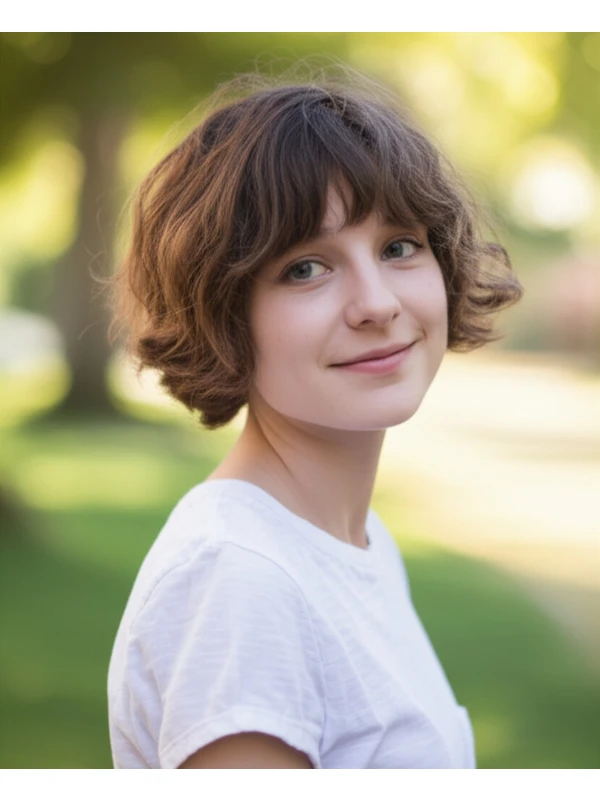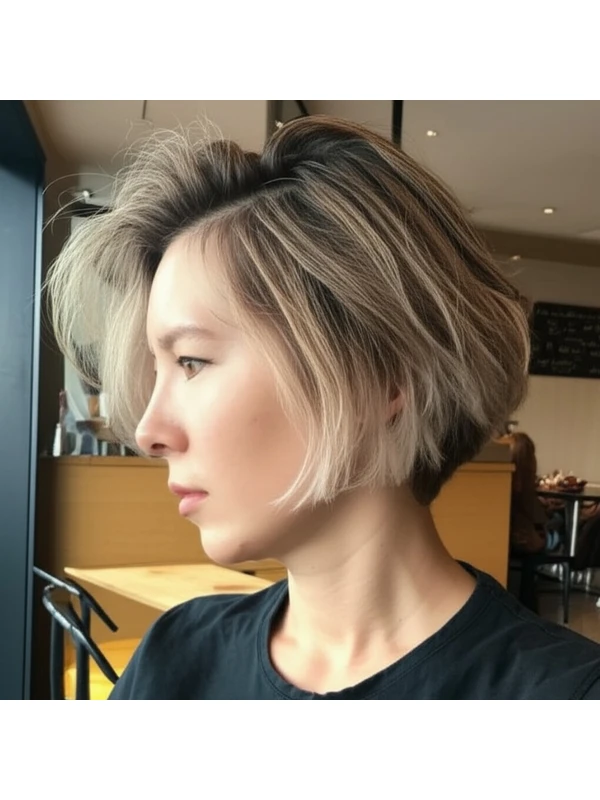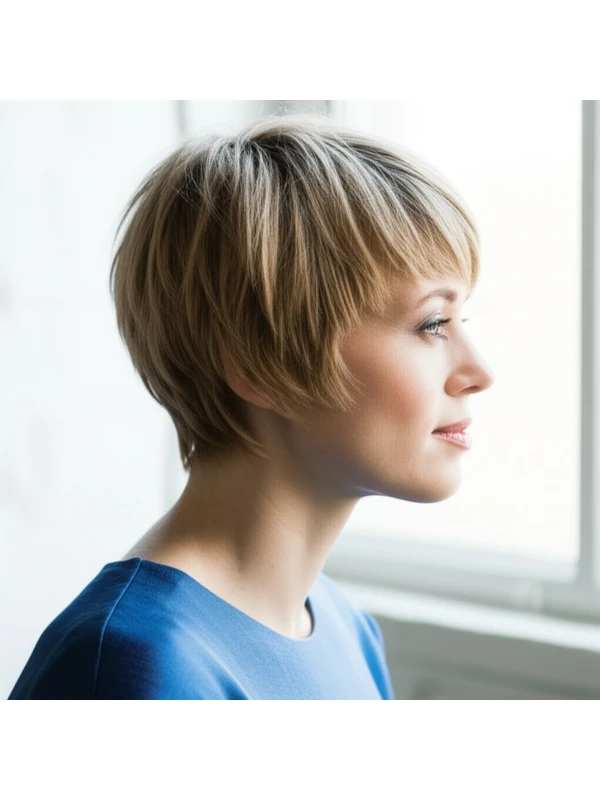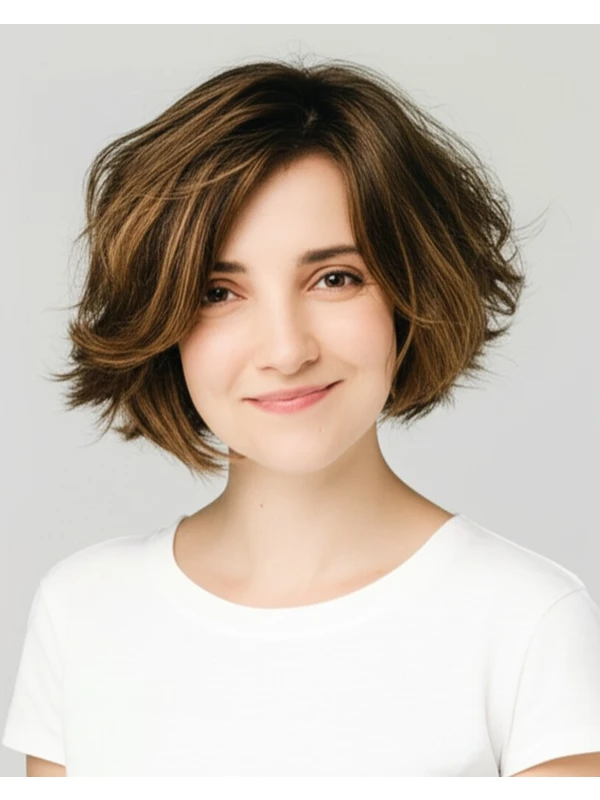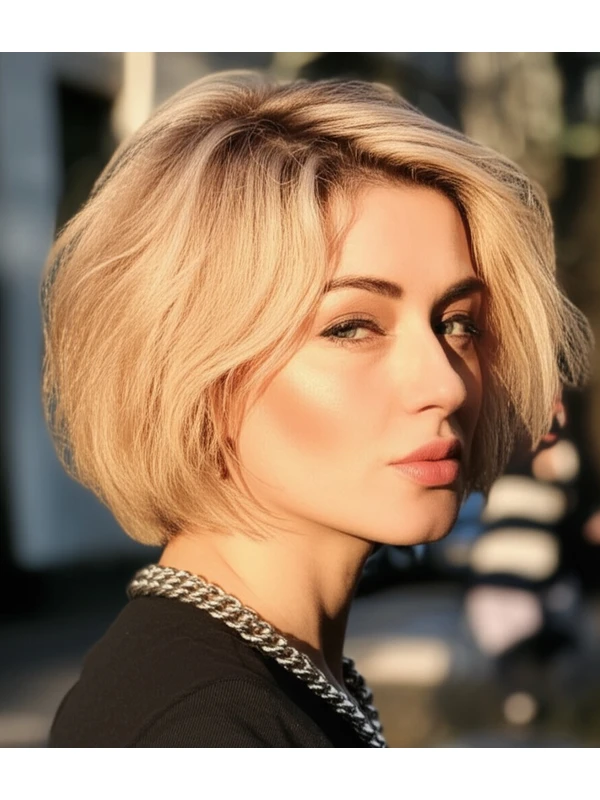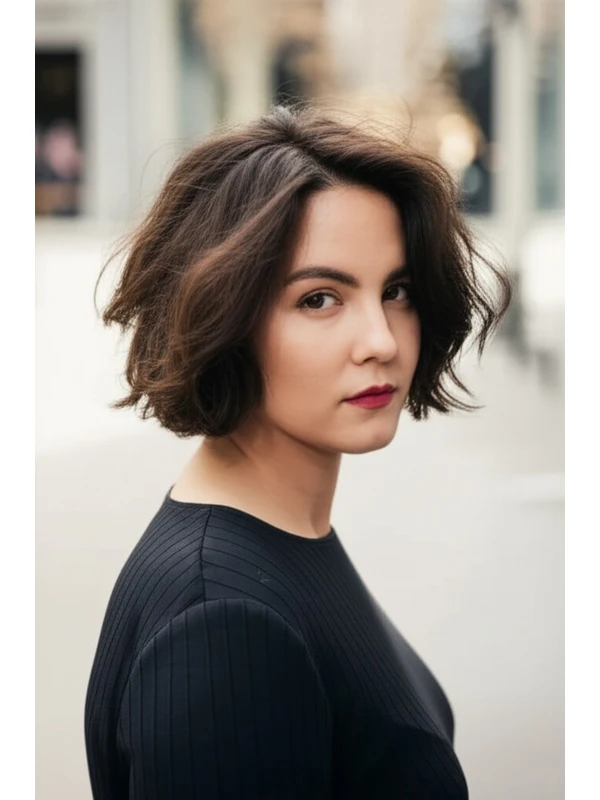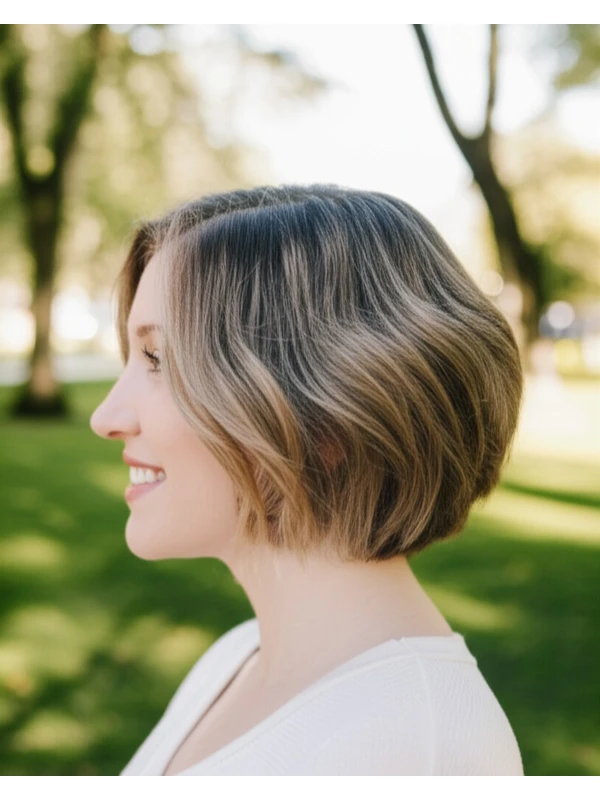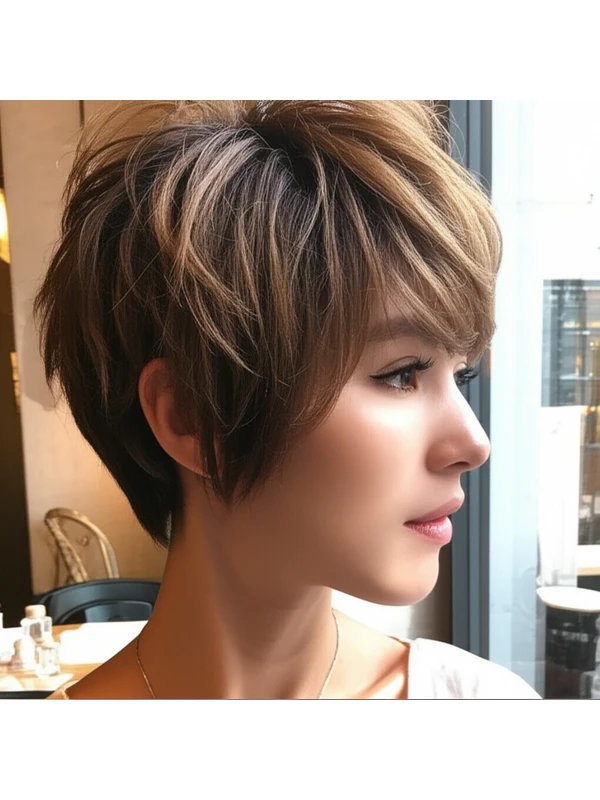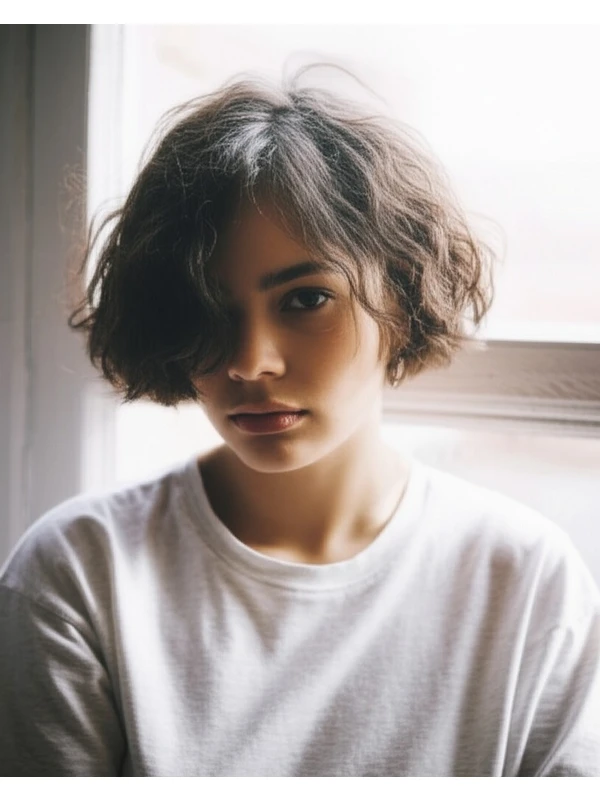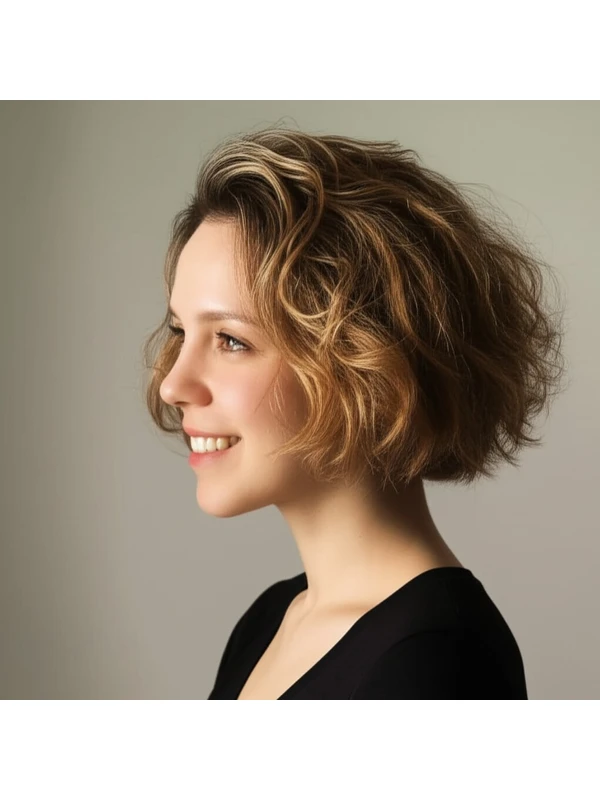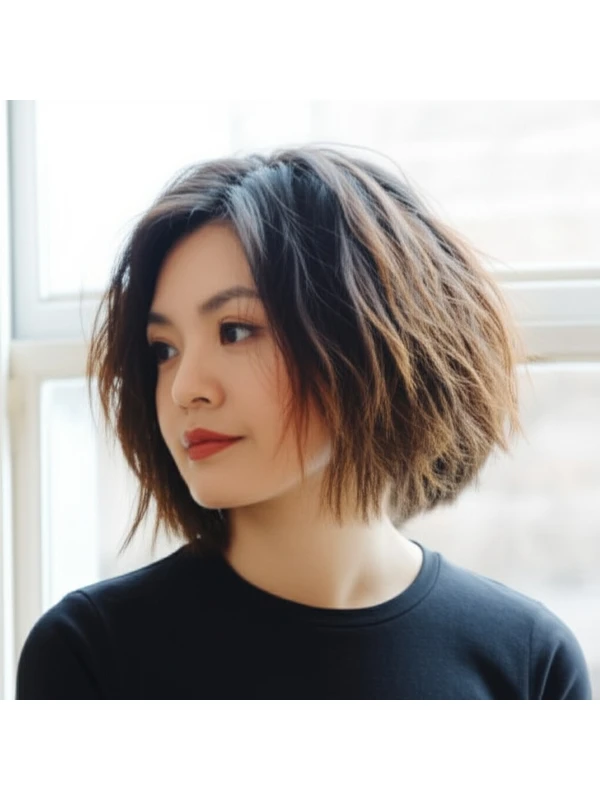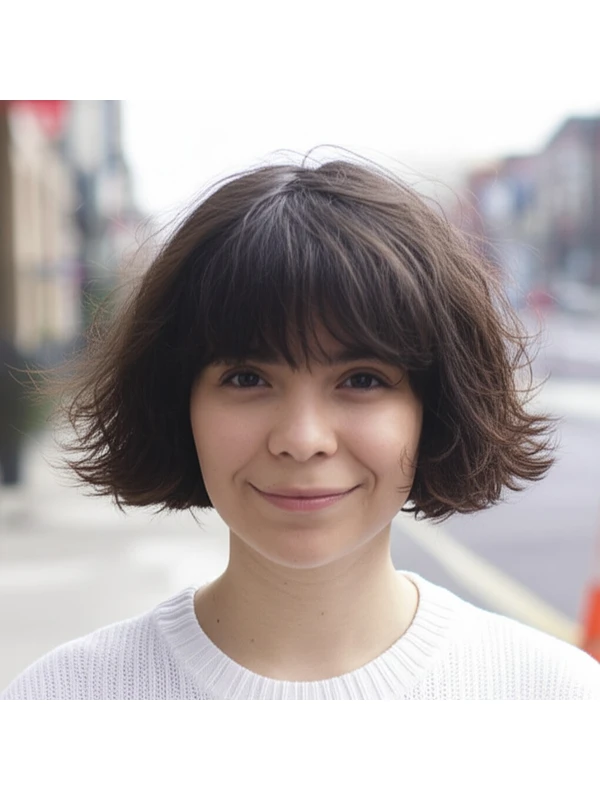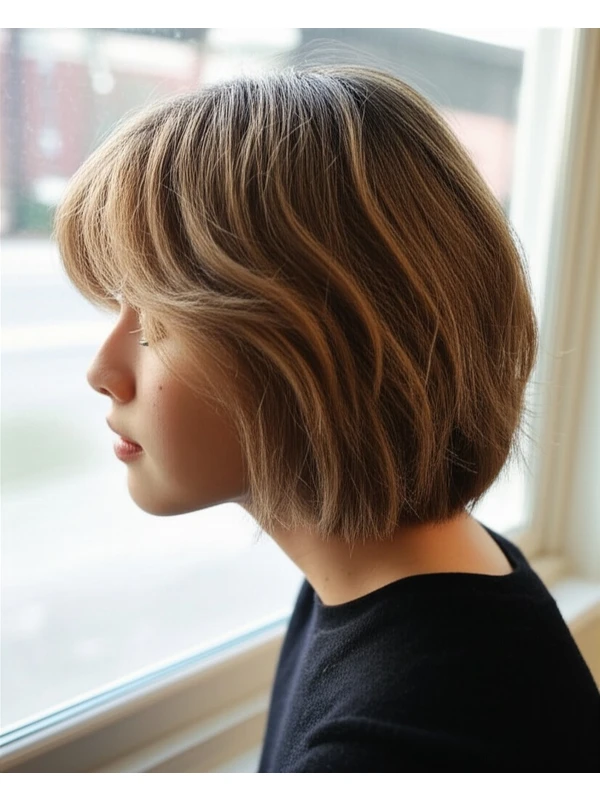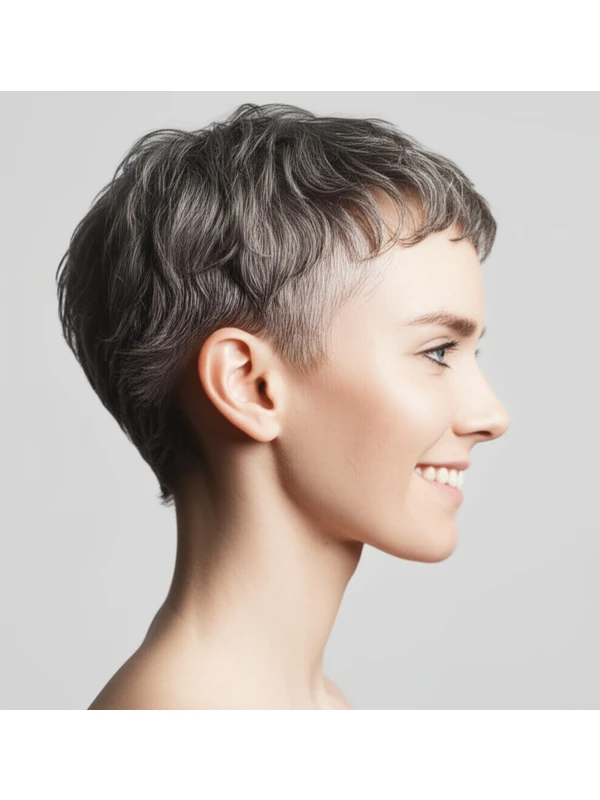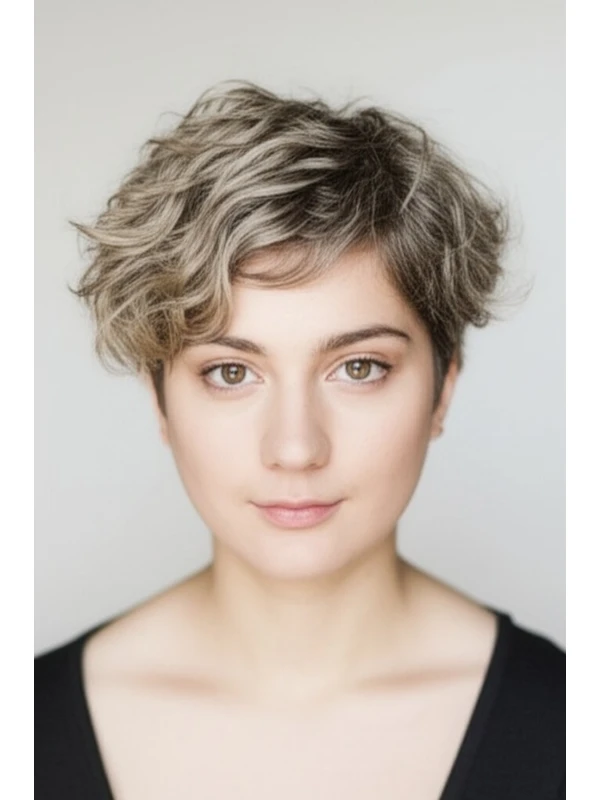#The Pageboy Cut: A Retro Revival with Modern Flair
The pageboy cut is back! This classic hairstyle offers a sophisticated look that’s surprisingly versatile. But it's more than just a throwback – modern interpretations can be tailored to suit almost any face shape, hair type, and personal style. Let’s dive into everything you need to know about this iconic 'do.
#1) Background & Definition: What is a Pageboy?
The pageboy cut gets its name from the traditional attire of young male servants (pages) in European courts – think short in front, longer in back, and gently curving. The hairstyle mirrors that shape! Key features include:
- Geometry: A blunt or slightly rounded fringe gradually increases in length towards the nape of the neck, creating a gentle “pageboy” curve at the bottom.
- Key Features: It’s all about that defined line and the subtle volume at the crown. The overall effect is polished and chic.
- Length Ranges: Typically falls between chin-length to shoulder-length (or slightly longer). The length greatly impacts the style's formality – shorter for a more playful look, longer for elegance.
- Alternative Names: You might also hear it called a "baby bob," “inverted bob” (though that can be broader), or simply a “vintage bob.”
#2) Face Shape Fit: Finding Your Perfect Angle
The pageboy cut's versatility shines in its ability to flatter different face shapes. Here’s how:
- Oval: Lucky you! An oval face is generally considered the most balanced, so almost any length of pageboy will look great. A side-swept fringe softens features further.
- Round: A longer pageboy (shoulder-length or slightly past) elongates a round face. Avoid chin-length styles that emphasize width. A deep side part and subtle layers can add asymmetry, which is slimming. Fringe: Opt for long, wispy bangs rather than blunt ones.
- Square: Soften the angles of a square face with rounded edges to the pageboy cut itself – avoid harsh lines. A fringe (either blunt or angled) helps camouflage a strong forehead.
- Heart: A chin-length or slightly longer pageboy balances a wider forehead and pointed chin. Side-swept bangs are your best friend, softening the upper face.
- Diamond: Similar to heart shapes, a diamond face benefits from softening angles. A side part and layers around the cheekbones will add balance and movement. A fringe isn't essential but can be flattering if kept soft and wispy.
- Oblong (Long): Avoid styles that make your face appear even longer! Shorter pageboy cuts with more volume at the crown are ideal. A blunt, straight-across fringe can help shorten the appearance of a long face.
#3) Body Proportions & Height Guidance: Silhouette Harmony
The pageboy cut isn’t just about your face; it impacts your overall silhouette!
- Petite: Shorter to mid-length styles work best. Too much length can overwhelm a smaller frame. Volume at the crown adds height without adding bulk.
- Average: Most lengths and volumes will suit an average build. Experiment with different fringe options for personality.
- Tall: Longer pageboy cuts (shoulder-length or longer) create balance, preventing you from looking too elongated. Consider a more voluminous style to soften the overall look.
- Narrow Shoulders: A slightly layered pageboy with volume at the crown will broaden shoulders visually.
- Broad Shoulders: Avoid styles that add excessive width at the shoulder line. Sleeker, more streamlined cuts are best.
- Short Neck: Mid-length to longer styles help elongate a short neck. Avoid chin-length cuts that can accentuate it.
- Long Neck: Shorter pageboy cuts with volume on top create the illusion of a shorter neck.
#4) Works Best With Hair Types & Densities: A Texture Breakdown
The beauty of the pageboy is its adaptability, but understanding your hair type is key to success!
- Straight: A classic choice! The clean lines are beautifully showcased. Use smoothing serums for extra shine and definition.
- Wavy: Embrace those waves! This cut can enhance natural texture. Consider a texturizing product to define the wave pattern.
- Curly/Coily: Can absolutely work, but shrinkage is crucial to consider (see below). Shorter lengths are generally better to avoid excessive bulk and maintain shape. A skilled stylist will cut with curl patterns in mind.
- Fine: Creates a fuller look thanks to the blunt lines. Layering can add even more volume.
- Medium: The most versatile density – this style will work well across different lengths and volumes.
- Thick: Thinning shears may be used during cutting to remove bulk and create movement. Layers are essential to prevent a boxy appearance.
Shrinkage Alert (Curly/Coily Hair): Remember that curls and coils can shrink significantly after drying. What looks like shoulder-length in the salon might end up much shorter! Communicate your desired length with your stylist, factoring in shrinkage.
#5) Styling Variations: From Casual to Chic
- Sleek vs. Textured: Sleek styles use smoothing products for a polished look. Texturizing sprays or creams add definition and movement.
- Middle vs. Side Part: A middle part creates symmetry; a side part adds softness and volume.
- Fringe Variations: Blunt, wispy, angled – the possibilities are endless! Experiment to find what suits your face shape best.
- Occasion Styling:
- Casual: Air-dry with a texturizing product for effortless style.
- Office: Sleek and polished with a smoothing serum.
- Evening: Add waves or curls using a curling iron or hot rollers, finish with hairspray.
#6) Maintenance: Keeping Your Pageboy Perfect
- Trim Cadence: Every 6-8 weeks to maintain the shape.
- At-Home Routine: Regular shampooing and conditioning are essential. Focus on products suited for your hair type.
- Heat vs Air-Dry: Minimize heat styling whenever possible to prevent damage. When using heat, always use a protectant spray.
- Product Checklist:
- Shampoo & Conditioner (for your hair type)
- Leave-in conditioner (especially important for dry or curly/coily hair)
- Smoothing serum (for sleek styles) / Texturizing product (for wavy/curly textures)
- Hairspray (flexible hold)
- Estimated Daily Styling Time: 15-30 minutes, depending on desired style and hair type.
#7) Grow-Out Roadmap: The Evolution of Your Style
- Months 1-3: The shape is at its most defined. Regular trims are crucial to maintain the blunt lines.
- Months 3-6: As it grows out, consider adding subtle layers for movement and preventing a boxy look (especially with thicker hair). The fringe may start to feel longer – adjust your styling accordingly.
- Maintaining Shape: Between cuts, use products that enhance your natural texture or smooth flyaways.
#8) Color Pairings: Enhancing the Pageboy’s Charm
- Cool Undertones: Ashy blondes, cool browns, and even icy grays complement cool skin tones beautifully.
- Warm Undertones: Honey blondes, caramel highlights, rich auburns enhance warm skin tones.
- Low-Commitment Options: Balayage or babylights add dimension without a harsh root line – perfect for transitioning to a new color.
#9) Season & Occasion Guide: Adapting Your Look
- Spring/Summer: Lighter, brighter colors and softer textures are ideal. Consider beachy waves or loose curls.
- Fall/Winter: Richer tones like chocolate brown or deep burgundy add warmth. Sleek styles with defined lines are perfect for a polished look.
- Occasions: Weddings call for elegant updos incorporating the pageboy shape; parties can handle more playful, textured looks; work requires a professional and tidy style.
#10) Cost & Time: Salon Investment
- Salon Time: Typically 45-90 minutes, depending on hair length, density, and styling complexity.
- Price Range: Expect to pay in the mid-to-high range for this cut – it requires a skilled stylist who understands shaping and precision.
#11) Pros & Cons: Weighing Your Options
Pros: Classic style, flattering on many face shapes, versatile with different styling options, relatively easy to maintain (with regular trims). Cons: Can require frequent trims to maintain shape, may not be ideal for all hair types without adjustments, can look dated if styled incorrectly.
#12) Salon Consultation Script: Questions to Ask
- "I'm interested in a pageboy cut. Could you assess my face shape and recommend the best length and fringe options?"
- “My hair is [hair type]. How will this style work with my texture, and what products would you suggest?”
- "How much volume should we incorporate at the crown to balance my features/body proportions?"
- "Can you show me examples of different pageboy styles that might suit me?"
- “What’s your plan for cutting around my face shape and how will it soften or accentuate certain features?”
#FAQs: Your Burning Questions Answered
- Is a pageboy cut difficult to style? Not necessarily! With the right products and techniques, it can be surprisingly easy.
- Can I do this at home? While possible, achieving the precise shape of a pageboy is best left to a professional stylist.
- Will a fringe look good on me? It depends on your face shape! A stylist can help you determine the ideal fringe length and style.
- How long will it take for my hair to grow out from this cut? Growth rates vary, but expect several months to see significant changes.
- Can I add layers to a pageboy cut? Yes, layering is often necessary, especially with thicker hair or more textured styles.
- Is the pageboy cut suitable for older women? Absolutely! It’s a timeless style that can be adapted to flatter mature features and embrace gray hair beautifully.
